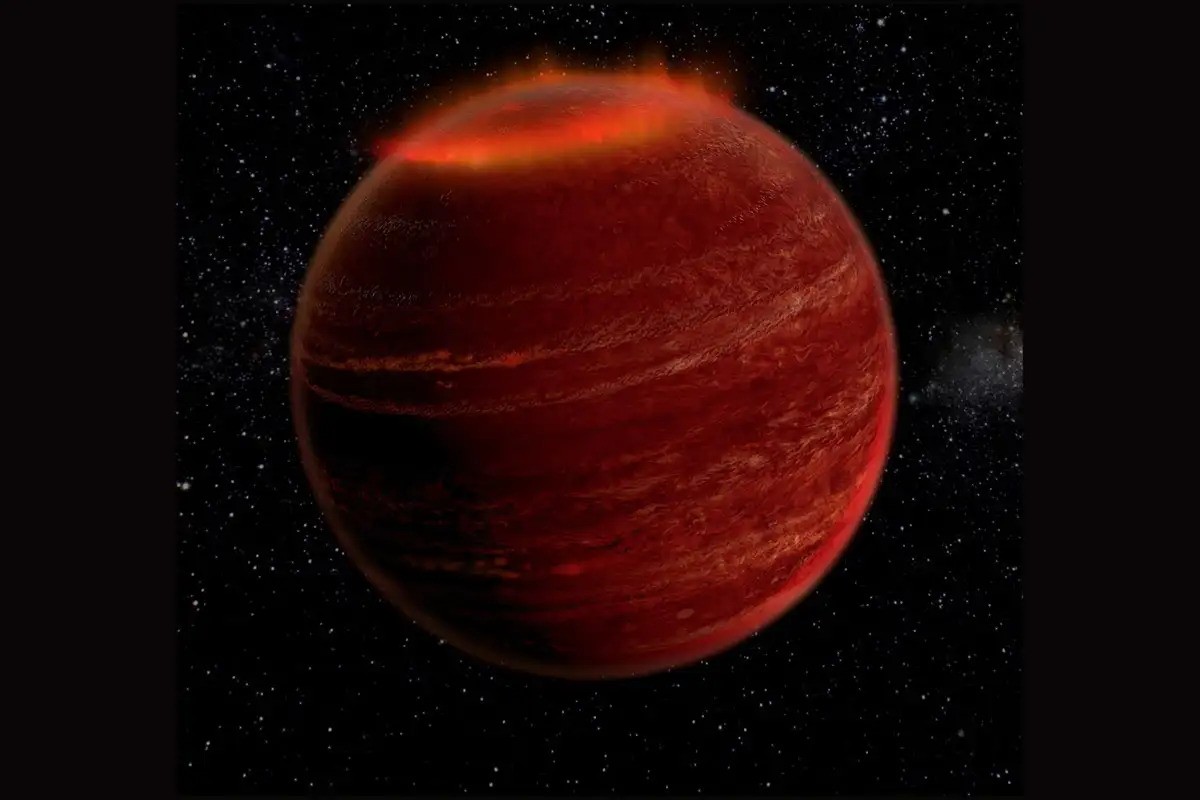Astronomers used the Keck II telescope to refine the parameters of the brown dwarf HD 33632 Ab. It orbits a star 86 light-years away from us.

Brown dwarf not far from Earth
Using the Keck II telescope in Hawaii, astronomers observed a nearby brown dwarf known as HD 33632 Ab. The results of the observation campaign, presented in an article published on May 14 on the arXiv preprint server, provide more information about the properties of this substellar object and its atmosphere.
Brown dwarfs (BD) are intermediate objects between planets and stars, occupying a mass range from 13 to 80 Jupiter masses (0.012 and 0.076 solar). Although the temperature and atmospheric properties of brown dwarfs are similar to those of gas giants, they are more massive and brighter at the same age, which makes it easier for astronomers to describe the properties of their atmosphere.
Located 86 light-years away, HD 33632 Ab is a companion star of solar mass HD 33632 A, which belongs to the spectral type FV8. It has a subsolar metallicity and is 1–2.5 billion years old. The brown dwarf has a mass of about 46 Jupiter masses and is about 20 AU away from its Sun.
A team of astronomers led by Chih-Chun Hsu from Northwestern University in Evanston, Illinois, used the Keck Planet Imager and Characterizer (KPIC) instrument to perform high-resolution spectroscopy of this system.
Parameters and chemical composition of the brown dwarf atmosphere
Observations have shown that HD 33632 Ab has predicted rotational and radial velocities of 53 and -8 km/s, respectively. The measured orbital period of the system is about 74 years, and the orbital eccentricity is 0.25. The collected data show that HD 33632 Ab is a less heavy substellar and is located at a closer distance from its host than previously thought. The mass of the brown dwarf is about 37 Jupiter masses, and its distance from HD 33632 is estimated at about 18 AU.
Thanks to spectroscopic analysis of HD 33632 Ab, astronomers discovered carbon monoxide and water vapor in its atmosphere. However, they did not find any traces of methane, which could be due to several factors, including the rapid rotation of the brown dwarf or the relatively low signal-to-noise ratio of the obtained spectra.
The study showed that HD 33632 Ab has a metallicity of 0.0 dex and a carbon-to-oxygen ratio of 0.58, which is generally consistent with the properties of the host star. The researchers note that such results are expected for brown dwarf companions formed as a result of gravitational core collapse or disk instability.
The authors of the article eventually emphasized that the new results for HD 33632 Ab could help us advance our knowledge about the formation and evolution of brown dwarfs in general, however, significant improvements in this matter still require a large sample of the studied close brown dwarfs.
According to phys.org


